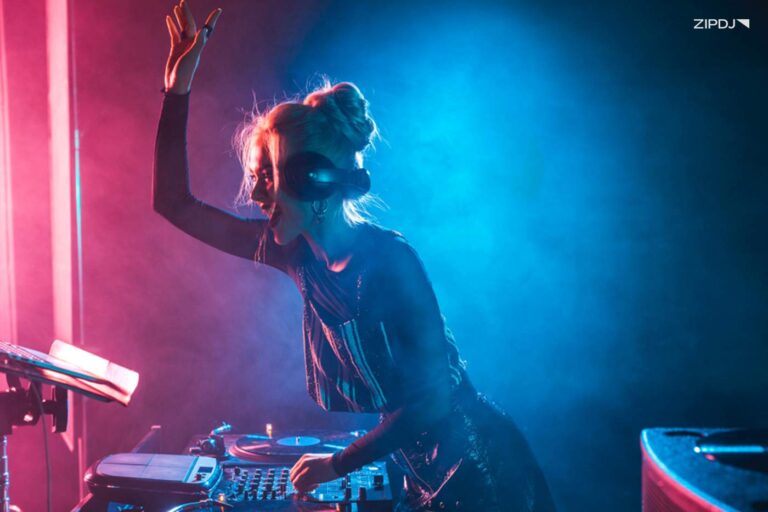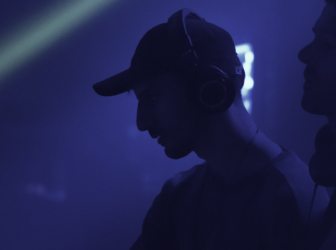Techno BPM: The Ultimate Guide For DJs

Techno is one of the oldest electronic music genres and is still regularly played on dance floors worldwide.
Understanding how the techno BPM varies between subgenres is essential for performing extended mixes with smooth transitions.
This guide examines the tempo ranges of multiple techno genres, from minimal techno to the faster tempos of club-ready hard techno.

What Is BPM?
Beats per minute (BPM) represent the tempo of tracks. DJs use beat-matching when mixing two songs.
Learning to use BPM provides a general foundation for the music theory of tempo and how it can be used to align tracks for smooth transitions.
Many of the best DJ controllers include a BPM counter to indicate each track’s current tempo and streamline the beat-matching process.
It’s also helpful to list the BPM of tracks in a music library. This step makes it easier to find new tracks with compatible tempos when mixing on the fly.
Explore ZIPDJ’s competitive pricing options.
What Is Techno?
One of the oldest electronic music genres, techno has been a mainstay of clubs and festivals since its emergence in the early 1980s. It’s defined by repetitive rhythms, driving basslines, and mechanical, often industrial, sound design.
Techno’s leading stars reshaped the genre by building on the pioneering DJing and production work of DJs such as Frankie Knuckles.
Many of the best techno DJs, including Carl Craig, Carl Cox, and Underground Resistance, are still active today and regularly perform and produce tracks.
Techno producers continue to experiment with slower tempos for minimal techno tracks, while hard techno’s faster tempos can reach up to 160 BPM.
Beyond the song itself, techno has influenced the history of DJ equipment, encouraging creative use of multi-deck setups, EQ techniques, and layered transitions.
What BPM Is Techno?
Techno’s beats per minute (BPM) ranges between 120 and 150, with some subgenres featuring slower and faster tempos.
The Importance Of BPM In Techno
Understanding BPM and rhythm is vital to DJing, as it creates a clear connection between two tracks in the mix.
Techno is no exception. As with understanding house music BPM, it provides the building block from which other mixing skills emerge.
Let’s explore other key reasons why understanding BPM is crucial for techno DJs:
- Establishing and changing energy levels: BPM significantly impacts energy, with slower BPMs suited to warm-up sets and faster tempos better suited to headline performances on the center stage.
- Streamlining playlist organization: Cataloging your techno collection by BPM makes finding tracks within the same tempo range much more manageable, saving time that can be used to focus on transitions.
- Experimenting with bass swapping: If you’re adept at bass swapping transitions, mastering BPM will streamline the technique so you can work the bass EQ during transitions.
- Mixing techno with other genres: Since the techno BPM range is similar to different genres, it’s an excellent opportunity to explore how these styles can work well together.
The stronger your grasp of the basics of BPM for different techno genres, the more opportunities you have to create stunning mixes for your audience.
BPM Genres By Techno
Techno is a broad term that has evolved throughout the history of DJing, giving rise to numerous diverse sub-genres.
Here’s a breakdown of the common techno genres and the average tempo ranges you can expect when performing these in a DJ set.
1. Minimal Techno
BPM range: 120-128 BPM
Minimal techno is one of the most popular styles of dance music in clubs, widely played by the best female DJs such as Peggy Gou and D. Tiffany.
With an emphasis on beats over melodies, it’s ideally suited to beginner DJs who want to master beat-matching before tackling advanced techniques.
It’s a great genre to switch to following a house music mix, transitioning from a daytime session into a heavier set in the evening.
2. Detroit Techno
BPM range: 120-135 BPM
Taking inspiration from early house music, Detroit techno has significantly influenced the evolution of techno since the 1980s.
Detroit techno tracks, known for their nuanced percussive arrangements and lush synthesizers, are guaranteed to liven up dance floors.
If you’re a techno DJ who enjoys mixing more melodic tracks, Detroit has some of the finest classics you can use.
3. Industrial Techno
BPM range: 130-150 BPM
It’s never too late to get into DJing industrial techno, which sits firmly on the more brutal end of the spectrum, with dynamic bass and percussion.
Clubs such as Berghain in Berlin, Germany, frequently feature guest DJs who incorporate elements of industrial techno into their sets.
Recommended reading: Discover the ten best clubs worldwide.
4. Hard Techno
BPM range: 140-160 BPM
Like industrial techno, hard techno eschews melodies and chord progressions in favor of raw, uncompromising bass and gritty percussion.
Featuring some of the fastest tempos, it’s a popular club-oriented sub-genre popular at events such as Solitary Garden.

5. Acid Techno
BPM range: 125-135 BPM
Acid techno, which drew on the sounds of the Roland TR-303 and other retro production hardware, rose to prominence during the 1990s rave scene.
It’s energetic and full of quirky, dynamic synthesizers, yet it retains the driving beats and atmosphere of other techno genres.
6. Ambient Techno
BPM range: 100-120 BPM
For DJs who prefer a more laid-back approach to their mixes, ambient techno’s slower BPM lends itself to afternoon sets in the sunshine.
Ambient techno DJs often blur the boundaries between ambient, dub, and dancefloor techno to take their audiences on fascinating aural journeys.
7. Dark Techno
BPM range: 125-135 BPM
As the name implies, dark techno is a subgenre that immerses the listener in deep, mysterious territory with a brooding undertone.
That said, some artists are exploring the genre’s possibilities, blending dark techno with hip-hop and creating stunning results.
8. Tech House
BPM range: 120-130 BPM
Tech house is a hugely popular techno subgenre that has thrived since the late 1990s, frequently played by the best club DJs.
After rising to prominence in London’s Fabric and The End nightclubs, tech house has perfected the merging of house and techno for underground clubbers.
Similar to minimal techno, it features a highly versatile BPM range, capable of transitioning from house music or increasing the energy to faster techno genres.
Techno BPM Chart
Techno music is frequently played in the best clubs worldwide and is highly regarded for its ability to liven up dance floors with powerful basslines.
While we’ve explored the BPM range for some of the most popular techno sub-genres, there are other niche techno genres to consider.
Here’s a handy reference table exploring the tempo thresholds for additional techno sub-genres.
| Music Genre | BPM Range |
| Deep techno | 120-130 BPM |
| Melodic techno | 118-128 BPM |
| Dub techno | 110-125 BPM |
| Progressive techno | 125-135 BPM |
| Psychedelic techno | 128-142 BPM |
| Funky techno | 128-135 BPM |
| Breakbeat techno | 130-140 BPM |
| Bleep techno | 120-150 BPM |
As you expand your techno listening habits to explore new sub-genres, use this chart as a quick reference when organizing your tracks.
How To Determine The BPM Of Techno
Whether you’re DJing techno or EDM, the BPM of a given track is essential information that can assist with the beat-matching process.
While this information is displayed on most DJ software for Mac and Windows devices, it is sometimes unavailable for reference.
For example, traditional turntables don’t include a BPM counter, so matching tempos must be done by ear with incremental adjustments to pitch.
If you’re struggling to determine the BPM of a techno track, you can use the following methods:
- Download a BPM detection tool: A BPM detection tool is an easy way to discover the tempo of a given track quickly. Upload the track to the tool, and it will process the information so it’s ready for mixing.
- Use a stopwatch and manually count: If you’re DJing on vinyl records, you can use a stopwatch and manually count the number of beats. You can also save time by counting the beats for thirty seconds and multiplying the result by two.
- Sign up for a record pool for your techno: Using a DJ pool is another solid resource for music acquisition. It includes BPM information in downloaded tracks. Some DJ pools also provide information around a song’s key for those interested in harmonic mixing.
- Use tap tempo tools: Lastly, some DJ hardware comes with a tap tempo tool that allows you to tap along to the kick drum and determine the BPM of a given track.
Once you’ve determined the BPM of your techno collection, use this information to help catalog your music to make it easier to find compatible tracks.
Sign up to ZIPDJ and build your music library.
Summary
Techno is a highly versatile genre that complements other styles of dance music, such as house, breakbeats, and electro.
By learning the different techno BPM, you can easily select excellent tracks that pair well together, saving time for focusing on transitions.
As your music collection expands, you can include BPM and other factors, such as key, to broaden your musical horizons.
Not a member ?
Join Today for Unlimited Music Downloads. Visit zipdj.com for more information.


